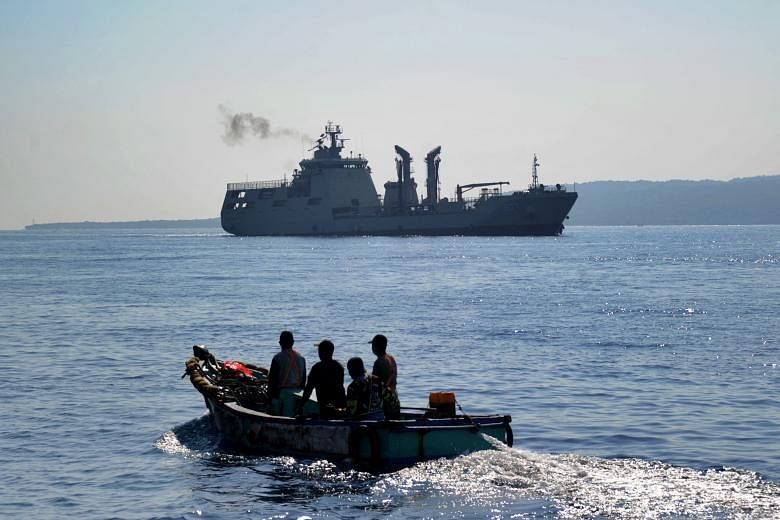NEW DELHI (THE STATESMAN/ASIA NEWS NETWORK) - While submarine disasters are not unknown to modern navies, it is indeed rare a vessel to be lost undersea.
In an incident reminiscent of the disappearance of an Argentine Navy submarine in 2017, it has now been confirmed that the Indonesian navy submarine, that sank off the coast of Bali last Wednesday (April 28), has been found split into three pieces on the sea bed, with all 53 crew declared dead.
Navy officials said they had received signals of the submarine's location from a depth of more than 2,600 ft early on Sunday. An underwater rescue vehicle loaned by Singapore was sent down to obtain visual confirmation of the wreckage. The KRI Nanggala disappeared after requesting permission to dive during a torpedo drill.
A week after the disaster, the reason for the vessel's sinking is far from clear. An escape suit believed to be from the sunken submarine was shown to the media in Bali on 25 April. Sunday's statement was issued a day after the Indonesian military confirmed that debris from the submarine, including prayer mats, had been found in the area where it went missing. The why and wherefore of the sinking remains a puzzle, however.
Indonesia's Navy Chief of Staff, Yudo Margono, said more items from the submarine had been recovered, including an anchor and crew safety suits. "The KRI Nanggala is divided into three parts - the hull of the ship, the stern, and the main parts are all separated, with the major component cracked," he told reporters.
The head of Indonesia's military, Hadi Tjahjanto, confirmed that there was no chance of finding any of the crew alive. "With deep sadness I can say that all 53 personnel on board have died."
According to experts, the depth at which the submarine was found was well beyond its survivable limit and it was only carrying enough oxygen for three days. The families of the missing crew members had held out hope that they would survive.
Indonesia's President, Joko Widodo, described the crew as Indonesia's "best patriots", adding: "All Indonesians convey their deep sadness over this incident, especially to the families of the submarine crew." The KRI Nanggala's disappearance led to an international search operation with India, the United States, Australia, Singapore, and Malaysia providing help.
Though the German-built vessel was more than 40 years old, it underwent what they call a "refit" in 2012. Indonesia had earlier claimed that the vessel was missing.
"We have now moved from the 'sub miss' phase to the decidedly 'sub sunk'. " There is uncertainty too whether an explosion had caused the disaster. The cracks happened gradually when it went down from 300 metres to 400 metres to 500 metres. Life hangs by a fragile thread, one that can be snapped as easily by disease as by accident.
- The Statesman is a member of The Straits Times media partner Asia News Network, an alliance of 24 news media entities.

